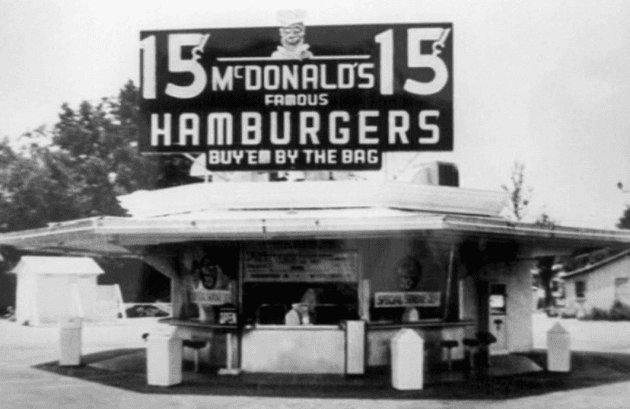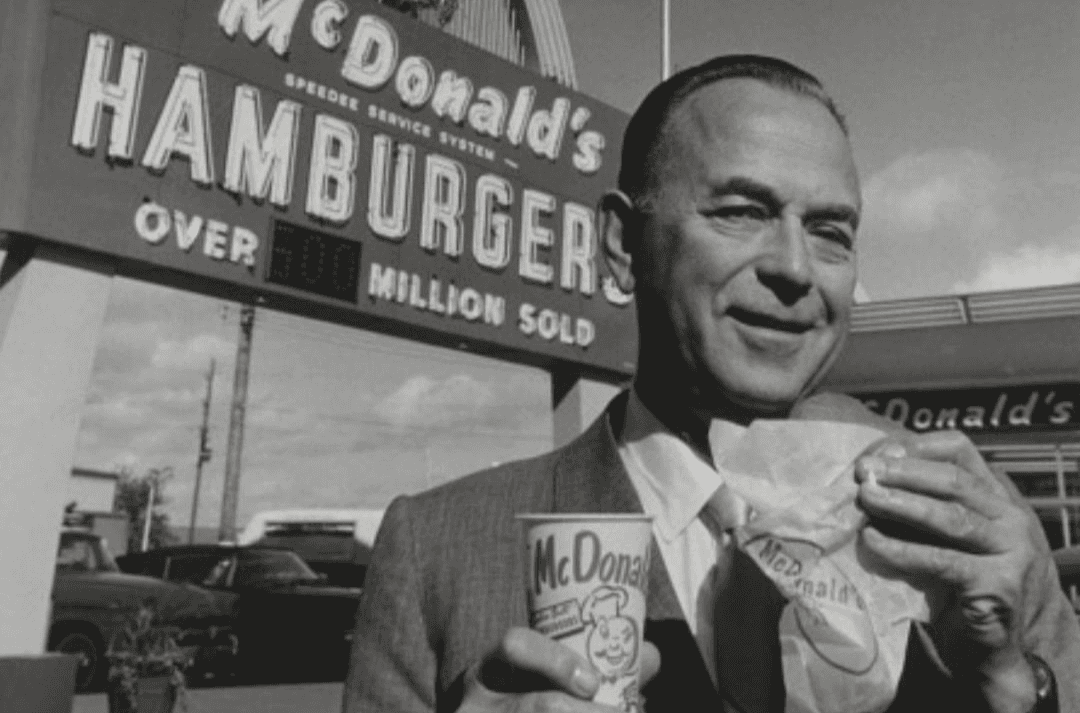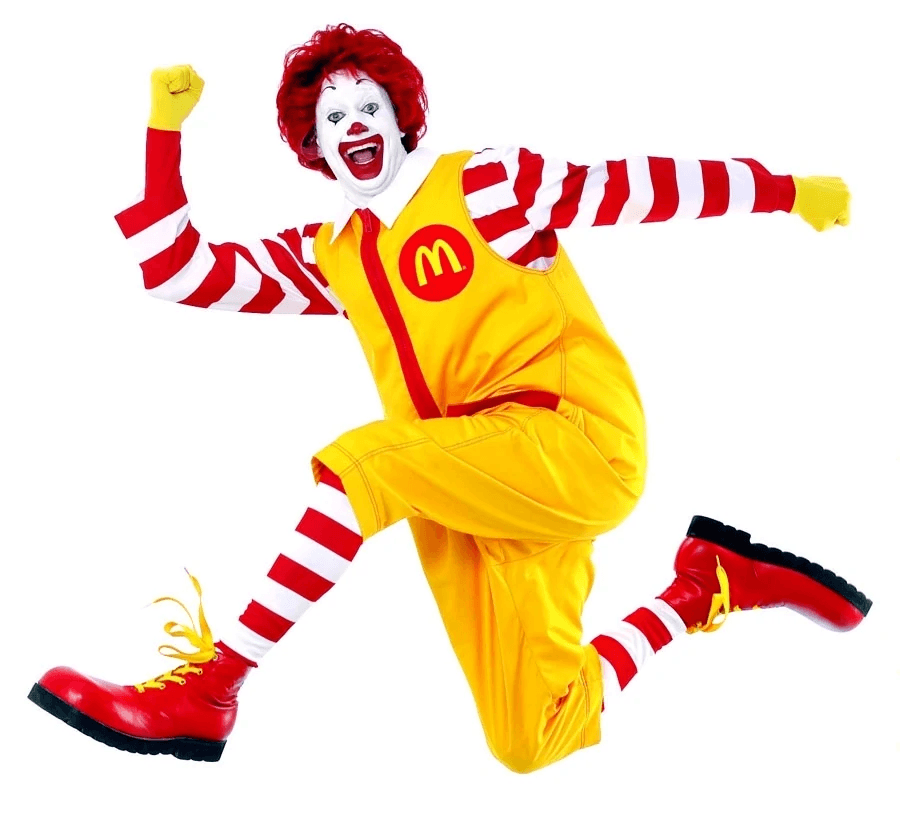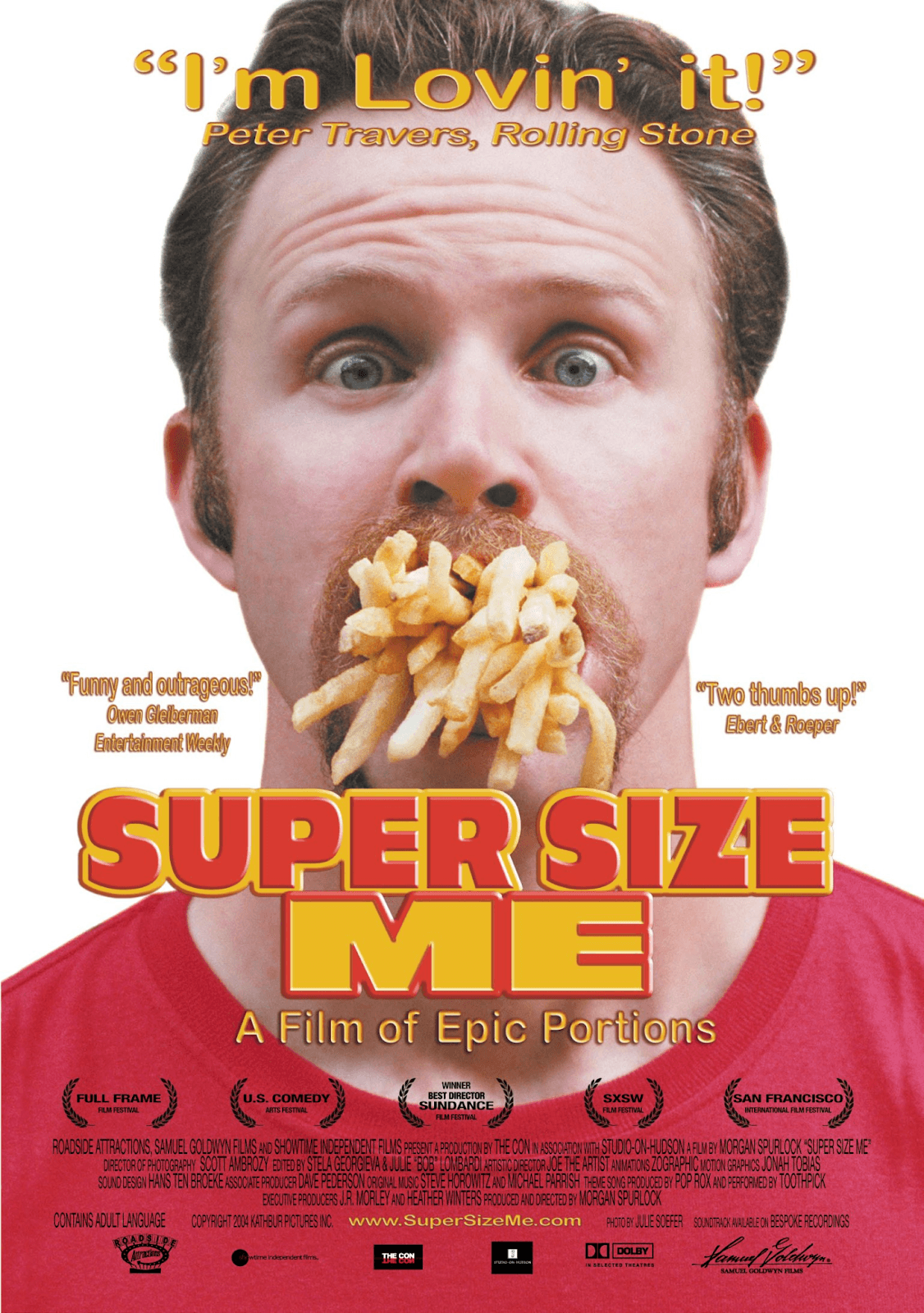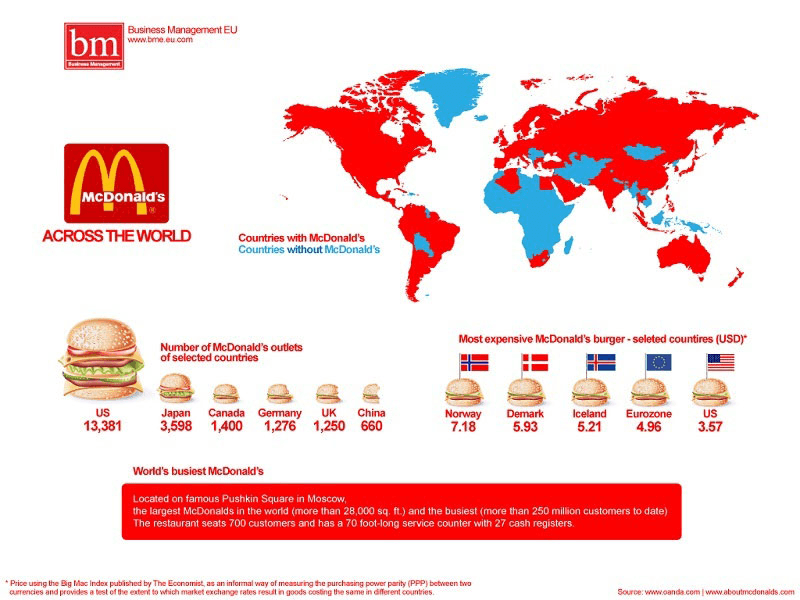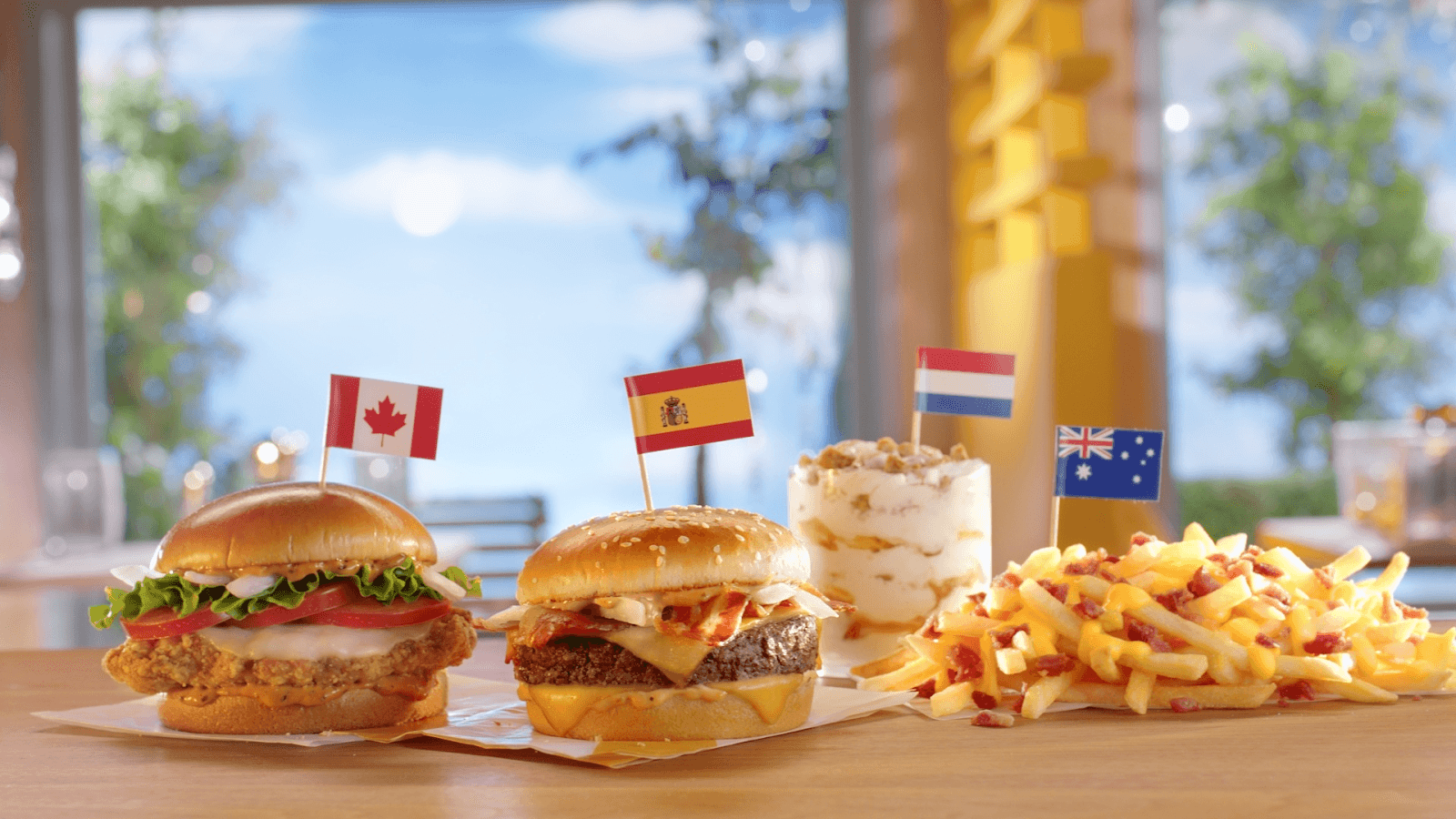Golden arches, golden nuggets, crispy fries, ice-cold Coke — I’m loving it.
No don’t worry, this piece isn’t an ad for McDonald’s. Instead, we’ll be exploring how a single California-based burger joint grew over the span of the past 80 years into the worldwide phenomenon that it is today.
We’ll dive into the history behind the iconic McDonald’s brand, what strategies have set Ronald’s Palace apart from its competition, and what marketers can learn from the effectiveness of McDonald’s marketing strategy. But first…
Claim Your Marketing Strategy Templates Bundle
This collection of templates will help you plan and execute an excellent marketing strategy that your entire team can believe in.
McDonald’s History: The Rise Of The Golden Arches
McDonald’s has grown a massive brand on the back of some powerful marketing initiatives and is now the 9th highest-value brand in the world.
The founding of this groundbreaking restaurant chain, however, was nothing special.
Richard and Maurice McDonald opened the original McDonald’s restaurant in 1940 in San Bernardino, California. There, the brothers created the Speedee Service System, which allowed them to cut down prep time on their food from around 20 minutes to under one minute.
By focusing on a limited menu—burgers, fries, shakes, and beverages—the brothers were able to create an incredibly effective operation with high-quality food and service.
The brothers looked to capitalize on their initial success with this new “fast-food” concept and hired Ray Kroc as their franchise agent. Soon, Kroc would be opening new restaurants across the country, and in 1961 he purchased the rights to McDonald’s from the McDonald brothers.
From this point on, McDonald’s grew rapidly. In 1957, McDonald’s had 40 stores pulling in upwards of $3 million per year. By the 1960s, there were roughly 1,000 McDonald’s franchises in the US.
Today, the company pulls in more than $20 billion in revenue on a yearly basis, and there are currently 39,198 independently owned and operated McDonald’s franchises across the world.
This sort of immense business growth didn’t come from nowhere.
McDonald’s History: Hot Dog Stand To Multinational Brand
- 1940: McDonald brothers open their first restaurant in San Bernardino
- 1948: The brothers implement the Speedee Service System, modeled after Henry Ford’s assembly lines
- 1953: McDonald’s opens its first franchise restaurant in Phoenix
- 1954: Ray Kroc joins the company
- 1961: Kroc buys out the McDonald brothers
- 1962/63: McDonald’s launches the golden arches and Ronald McDonald
- 1963: Ronald McDonald takes center stage in McDonald’s first TV commercial
- 1967: Kroc takes over as CEO
- 1967: McDonald’s opens its first international restaurant in Canada
- 1974: Ronald McDonald House charity opens
- 1979: The Happy Meal launches
- 1988-1996: The company doubles its number of restaurants, opening restaurant #20,000 in ‘96
- 2000: McDonald’s has opened more than 11,000 restaurants outside of the US
- 2003: “I’m Lovin’ It” marketing campaign launches
- 2004: “Super Size Me” documentary is released
- 2006: McDonald’s begins offering nutrition information for all menu items
- 2015: All-day breakfast launches
- 2018: Announces goal to have all packaging come from renewable sources by 2025
The Ideas That Built Success: Values & Standards
The first big idea that Kroc used to grow McDonald’s was consistency—he envisioned a restaurant serving food that tasted the same in Alaska as in Alabama.
Kroc also believed in four core values of the McDonald’s brand: quality, service, cleanliness, and value.
“If I had a brick for every time I’ve repeated the phrase Quality, Service, Cleanliness, and Value, I think I’d probably be able to bridge the Atlantic Ocean with them.” – Ray Kroc
These values were then supported by the three primary pillars of McDonald’s success: franchisees, suppliers, and employees.
Franchisees are required to undergo extensive training at McDonald’s “Hamburger Academy,” where they learn how to uphold McDonald’s core values in their individual franchises.
Suppliers are carefully selected to uphold quality ingredients, and McDonald’s prides itself on utilizing local and regional farms and supply lines to keep their food fresh and support the areas their restaurants are based in.
Finally, while McDonald’s employees are at times the punching bag of jokes in popular culture, they are valuable assets within this system envisioned by Kroc. The company often helps struggling employees get back on their feet. As former McDonald’s employee James Franco once said, “All I know is that when I needed McDonald’s, McDonald’s was there for me. When no one else was.”
If you’ve ever been desperate for a cheap meal late at night, you probably feel a similar sentiment.
4 Marketing Strategies That Made McDonald’s Massive Brand
So, what exactly did McDonald’s do differently that set them apart from the rest of the fast-food marketplace?
1. Implemented A Case-Study-Worthy Franchising Model
While fairly commonplace today, McDonald’s franchising model was one of the first of its kind and is the model many companies try to replicate.
This worked for two reasons: First, McDonald’s invested a ton of money into ensuring that there was consistent quality across its franchises. Second, the company invested in sourcing products from individual regions, and tailored menus to match regional tastes.
By sticking with its main tenets (quality, service, cleanliness, and value) and incorporating localized ingredients and tastes into regional menus, McDonald’s has been able to grow with expanding markets and ensure its franchisees see success in any locality.
2. Invested Massive Amounts In Marketing To All Ages
As a fast-food restaurant, it can be hard to pin down a specific target audience. That’s why McDonald’s has, since the start, looked to find ways to market themselves as a great option for all ages, i.e. “the entire family.”
Options like the Happy Meal alongside bigger packages and portion sizes make it easy for anyone who is hungry to turn to McDonald’s as a solution, big or small.
3. Doubled Down On Core Products
Another driver of McDonald’s continued success is its commitment to its core product offerings.
This trend started way back with the original McDonald brothers, who served an extremely limited menu so they could create high-quality products and quick service times for all of their products.
4. Made Changes To Meet Customer Demands
A major turning point for McDonald’s was the release of “Super Size Me,” which opened many people’s eyes to the damaging effects of a diet relying on processed food like McDonald’s.
In response to this major PR issue McDonald’s expanded its menu to include more health-conscious options. The company began publishing nutrition information on its menu and products.
McDonald’s Marketing Mix
Want a more old-school breakdown? Here’s the 4 Ps of McDonald’s marketing strategy.
Product
McDonald’s offers a variety of fast-food options including classic American staples (burgers & fries), an extensive selection of sweets and drinks (McCafe), McDonald’s-specific favorites (Big Mac, Quarter Pounder).
Price
McDonald’s uses a value-based pricing strategy and strives to provide value to its customers across the menu, and also offers a $1-3 menu. In essence, their goal is to keep prices as low as possible.
Place
Under McDonald’s franchising model, you’re able to find a restaurant near you almost anywhere you are.
Additionally, the company is investing in delivery options with Uber Eats, Doordash, and other delivery services.
Promotion
McDonald’s has invested unbelievable amounts of money into advertising efforts that span from traditional TV and radio to social media, guerilla marketing, and everything in between. These promotions center around McDonald’s as a great restaurant option for the whole family.
4 Strategies To Steal From McDonald’s Marketing Successes
1. Invest In Core Products
A key reason McDonald’s has been able to grow and sustain its continued success is its focus on promoting and continuously improving its core product offerings. These include fan favorites like the Big Mac and its famous fries, to more up-and-coming products like chicken nuggets.
In fact, McDonald’s recently offered a 2 for $5 deal with four of its primary menu favorites (Big Mac, Quarter Pounder with Cheese, McNuggets, and Filet O’ Fish). This shows that the company is not only continuing to stick with its core products, it’s also actively looking for new opportunities to promote these products and keep customers interested in its menu.
How can you do this for your company? Identify the core products you offer—those that your customers come back time and again to get from you—and see if there are opportunities to promote them to a broader audience.
By investing marketing and development dollars into your core products, you can ensure your company will continue to see revenue from these products while you look to scale or develop new products.
2. Be Agile & Proactive When Responding To Customer Feedback
When McDonald’s faced a major backlash after the release of “Super Size Me,” the company moved swiftly to adjust their menu, marketing, and internal policies to meet customer demands of a healthier, more transparent eating experience.
In the social media environment most businesses operate within, agility is key. Keep your ear to the street (or in this case, your feed) and see what your customers and outsiders have to say about your company. There may be opportunities for improvement you’re missing out on.
3. Large Target Audience = Large Marketing Budget
McDonald’s brand identity is a fast and easy option for the entire family. With such a broad target audience, it is difficult to hone in on one particular audience and channel.
This is why McDonald’s invests so much money into advertising across a wide variety of channels.
What does this mean for your brand? Either lock in on your target audience, or start spreading your marketing budget around. At this point you can find which channels work best and invest in those more heavily, but if you’re trying to appeal to everyone you need to get in front of everyone.
4. Expand Into New Markets By Appealing To Geographical Preferences
If you want to grow your reach by expanding into new markets, you need to make sure that you make the necessary changes to your approach to appeal to that market.
For McDonald’s, this means sourcing local ingredients and adjusting menus to appeal to regional tastes. For your brand, this may mean changing your outreach efforts to meet cultural norms or creating content in multiple languages.
By doing so, you can break down the barriers between new markets and your product and begin building a dedicated customer base in those markets.
Powerful Marketing Strategies: I’m Lovin’ It
Now that you know the marketing strategies that made McDonald’s successful, go out and make them work for your brand.
Find your values, locate your core products, and invest time and money into improving and promoting them.
Recommended reading: FDA Compliance Generator

